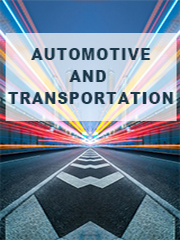Report overview
Automotive seat climate technology keeps up driver and traveler's seats temperature to an agreeable level during travels. The technology warms the seats in icy temperature and to cool the seats in tropical and hot conditions.
Automotive seat climate systems comprises of the following parts ? electronic control unit (ECU), seat ventilation system, seat warming system and neck conditioner system. The ECU framework is inserted in an automotive seat climate framework and controls its general functioning. Seat ventilation system gives a comfortable sensation to the driver and traveler seats by evacuating the warmth caught between the body and seat in tropical situations. Seat warming systems help to control the temperature of the vehicle seat. Fans and incorporated thermoelectric technology influence the seats to warm or cool as indicated by client needs. Neck conditioner gives warmed or cooled air through seat necks giving solace to driver and travelers.
This report aims to provide a comprehensive presentation of the global market for Automotive Seat Climate Systems, with both quantitative and qualitative analysis, to help readers develop business/growth strategies, assess the market competitive situation, analyze their position in the current marketplace, and make informed business decisions regarding Automotive Seat Climate Systems. This report contains market size and forecasts of Automotive Seat Climate Systems in global, including the following market information:
Global Automotive Seat Climate Systems Market Revenue, 2018-2023, 2024-2030, ($ millions)
Global Automotive Seat Climate Systems Market Sales, 2018-2023, 2024-2030, (K Units)
Global top five Automotive Seat Climate Systems companies in 2022 (%)
The global Automotive Seat Climate Systems market was valued at US$ 9709.6 million in 2022 and is projected to reach US$ 12310 million by 2030, at a CAGR of 3.4% during the forecast period. The influence of COVID-19 and the Russia-Ukraine War were considered while estimating market sizes.
The primary factor that drives the market is the increased driver comfort during long journeys and rise in penetration of semi-luxury and luxury vehicles worldwide. Further, growth in disposable income of the population, high fuel efficiency, and lower electric power consumption are also expected to fuel the market growth. However, high installation cost of automotive climate seats is anticipated to hinder this growth. Moreover, increase in demand for electric and hybrid vehicles, and high requirement for climate seas in mid-passenger and commercial vehicles are expected to offer ample number of opportunities to key players of the market.
We surveyed the Automotive Seat Climate Systems manufacturers, suppliers, distributors and industry experts on this industry, involving the sales, revenue, demand, price change, product type, recent development and plan, industry trends, drivers, challenges, obstacles, and potential risks.
Total Market by Segment:
Global Automotive Seat Climate Systems Market, by Type, 2018-2023, 2024-2030 ($ Millions) & (K Units)
Global Automotive Seat Climate Systems Market Segment Percentages, by Type, 2022 (%)
Electronic Control Unit
Seat Ventilation System
Seat Heating System
Neck Conditioner System
Global Automotive Seat Climate Systems Market, by Application, 2018-2023, 2024-2030 ($ Millions) & (K Units)
Global Automotive Seat Climate Systems Market Segment Percentages, by Application, 2022 (%)
Passenger Cars
Light Commercial Vehicles (LCVs)
Heavy Commercial Vehicles (HCVs)
Global Automotive Seat Climate Systems Market, By Region and Country, 2018-2023, 2024-2030 ($ Millions) & (K Units)
Global Automotive Seat Climate Systems Market Segment Percentages, By Region and Country, 2022 (%)
North America
US
Canada
Mexico
Europe
Germany
France
U.K.
Italy
Russia
Nordic Countries
Benelux
Rest of Europe
Asia
China
Japan
South Korea
Southeast Asia
India
Rest of Asia
South America
Brazil
Argentina
Rest of South America
Middle East & Africa
Turkey
Israel
Saudi Arabia
UAE
Rest of Middle East & Africa
Competitor Analysis
The report also provides analysis of leading market participants including:
Key companies Automotive Seat Climate Systems revenues in global market, 2018-2023 (Estimated), ($ millions)
Key companies Automotive Seat Climate Systems revenues share in global market, 2022 (%)
Key companies Automotive Seat Climate Systems sales in global market, 2018-2023 (Estimated), (K Units)
Key companies Automotive Seat Climate Systems sales share in global market, 2022 (%)
Further, the report presents profiles of competitors in the market, key players include:
Lear Corporation
Gentherm
Konsberg Automotive
Adient plc
Continental AG
Magna International Inc.
II-VI, Inc.
Toyota Motor Corporation
Recticel
Faurecia
Outline of Major Chapters:
Chapter 1: Introduces the definition of Automotive Seat Climate Systems, market overview.
Chapter 2: Global Automotive Seat Climate Systems market size in revenue and volume.
Chapter 3: Detailed analysis of Automotive Seat Climate Systems manufacturers competitive landscape, price, sales and revenue market share, latest development plan, merger, and acquisition information, etc.
Chapter 4: Provides the analysis of various market segments by type, covering the market size and development potential of each market segment, to help readers find the blue ocean market in different market segments.
Chapter 5: Provides the analysis of various market segments by application, covering the market size and development potential of each market segment, to help readers find the blue ocean market in different downstream markets.
Chapter 6: Sales of Automotive Seat Climate Systems in regional level and country level. It provides a quantitative analysis of the market size and development potential of each region and its main countries and introduces the market development, future development prospects, market space of each country in the world.
Chapter 7: Provides profiles of key players, introducing the basic situation of the main companies in the market in detail, including product sales, revenue, price, gross margin, product introduction, recent development, etc.
Chapter 8: Global Automotive Seat Climate Systems capacity by region & country.
Chapter 9: Introduces the market dynamics, latest developments of the market, the driving factors and restrictive factors of the market, the challenges and risks faced by manufacturers in the industry, and the analysis of relevant policies in the industry.
Chapter 10: Analysis of industrial chain, including the upstream and downstream of the industry.
Chapter 11: The main points and conclusions of the report.
